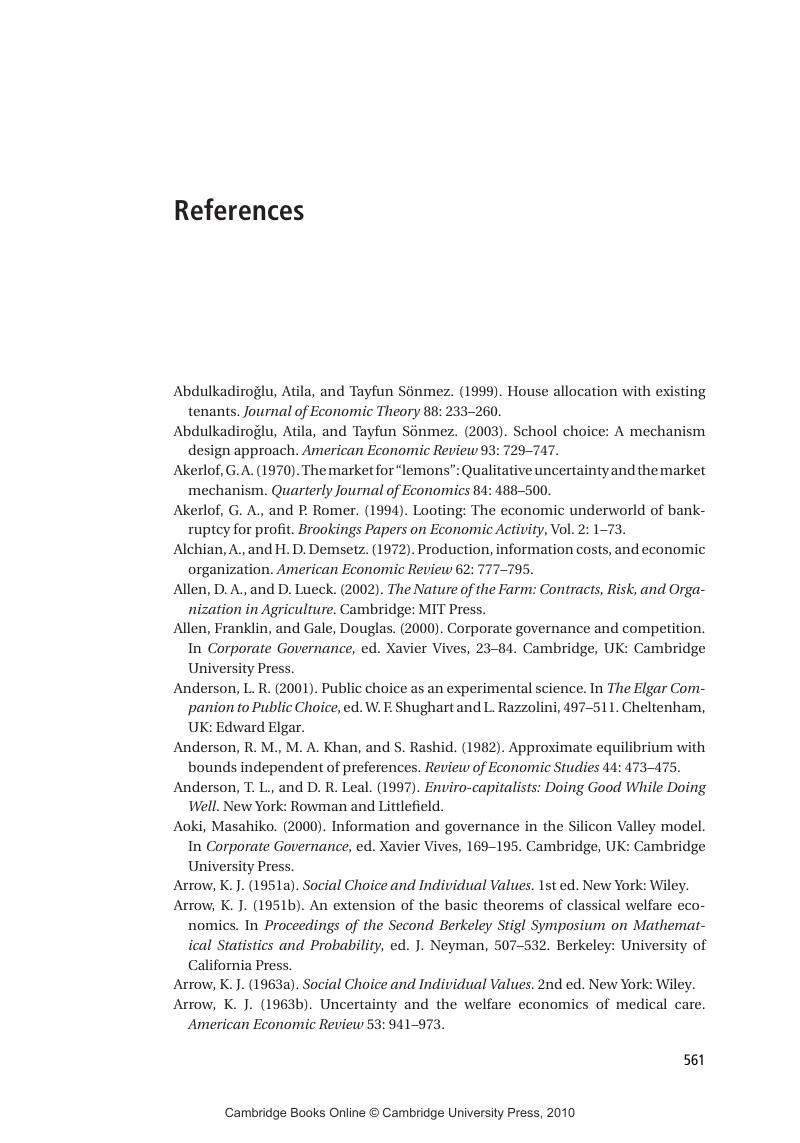Book contents
- Frontmatter
- Contents
- Preface to the Second Edition
- 1 Equilibrium, Efficiency, and Asymmetric Information
- 2 Basic Models and Tools
- 3 Hidden Action
- 4 Corporate Governance
- 5 Hidden Characteristics
- 6 Auctions
- 7 Voting and Preference Revelation
- 8 Public Goods and Preference Revelation
- 9 Matching
- 10 General Competitive Equilibrium
- References
- Author Index
- Subject Index
- References
References
- Frontmatter
- Contents
- Preface to the Second Edition
- 1 Equilibrium, Efficiency, and Asymmetric Information
- 2 Basic Models and Tools
- 3 Hidden Action
- 4 Corporate Governance
- 5 Hidden Characteristics
- 6 Auctions
- 7 Voting and Preference Revelation
- 8 Public Goods and Preference Revelation
- 9 Matching
- 10 General Competitive Equilibrium
- References
- Author Index
- Subject Index
- References
Summary

- Type
- Chapter
- Information
- IncentivesMotivation and the Economics of Information, pp. 561 - 578Publisher: Cambridge University PressPrint publication year: 2006



